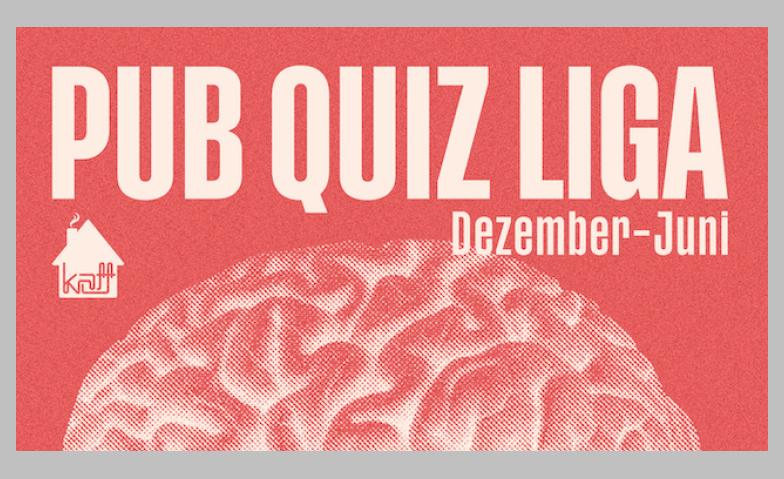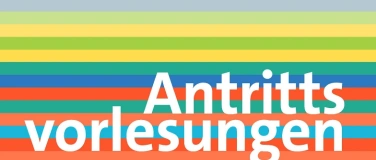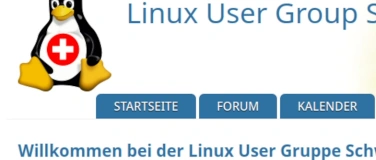Filter:
Events in
welche
in
stattfinden.
Dating
Dating / Single-Party
Dating / Sonstige Veranstaltungen
Dating / Speed-Dating
Diverses
Essen & Trinken
Fasnacht / Fasching / Karneval
Fasnacht / Fasching / Karneval / Party
Fasnacht / Fasching / Karneval / sonstige Veranstaltungen
Fasnacht / Fasching / Karneval / Umzug
Festivals
Festivals / Electronic
Festivals / Film
Festivals / Hip-Hop & Rap
Festivals / Jazz & Blues
Festivals / Kunst & Kultur
Festivals / Pop & Rock
Festivals / Schlager & Volksmusik
Festivals / Tanz
Festivals / Weitere Festivals
Freizeit & Ausflüge
Freizeit & Ausflüge / Ausfahrt
Freizeit & Ausflüge / Ausflug
Freizeit & Ausflüge / Brauchtum
Freizeit & Ausflüge / Bürgertreffen
Freizeit & Ausflüge / Eventreisen
Freizeit & Ausflüge / Film & Kino
Freizeit & Ausflüge / Freizeit- und Erlebnisparks
Freizeit & Ausflüge / Gaming
Freizeit & Ausflüge / Gruppen & Spiele
Freizeit & Ausflüge / Info-Event
Freizeit & Ausflüge / Sonstige Veranstaltungen
Freizeit & Ausflüge / Stammtisch
Freizeit & Ausflüge / Tag der offenen Tür
Freizeit & Ausflüge / Tier- und Naturerlebnisse
Freizeit & Ausflüge / Wanderung
Führungen & Vorträge
Führungen & Vorträge / Business-Treff
Führungen & Vorträge / Führung
Führungen & Vorträge / Live-Fotoreportage / Diashow
Führungen & Vorträge / Podium
Führungen & Vorträge / Stadtführung
Führungen & Vorträge / Symposium
Führungen & Vorträge / Tagungen & Kolloquien
Führungen & Vorträge / Vortrag
Gesundheit & Spiritualität
Gesundheit & Spiritualität / Blutspende
Gesundheit & Spiritualität / Gesundheit & Wohlbefinden
Gesundheit & Spiritualität / Selbsthilfegruppe
Gesundheit & Spiritualität / Spiritualität
Gesundheit & Spiritualität / Wellness
Kinderveranstaltungen
Kinderveranstaltungen / Babys
Kinderveranstaltungen / Familienveranstaltungen
Kinderveranstaltungen / Ferienprogramm
Kinderveranstaltungen / Jugendliche
Kinderveranstaltungen / Kinderfest
Kinderveranstaltungen / Kinderführung
Kinderveranstaltungen / Kinderparty
Kinderveranstaltungen / Kindertheater
Kinderveranstaltungen / Konzert
Kinderveranstaltungen / Kurs
Kinderveranstaltungen / Puppentheater
Klassik & Opern
Klassik & Opern / Klassik
Klassik & Opern / Oper & Operette
Konzert
Konzert / A cappella & Vocal
Konzert / Blasmusik
Konzert / Chor
Konzert / Country
Konzert / Electro
Konzert / Folk
Konzert / Funk & Soul
Konzert / Gospel
Konzert / Gothic & Wave
Konzert / Hard Rock & Heavy Metal
Konzert / Hip-Hop & Rap
Konzert / Indie & Alternative
Konzert / Jazz & Blues
Konzert / Kirchenmusik
Konzert / Latin
Konzert / Offene Bühne
Konzert / Pop & Rock
Konzert / Punk
Konzert / Reggae & Ska
Konzert / Rhythm & Blues
Konzert / Schlager & Volksmusik
Konzert / Singer & Songwriter
Konzert / Swing
Konzert / Weitere Musikrichtungen
Konzert / World & Ethno
Konzert / Zupfmusik
Kunst & Ausstellungen
Kunst & Ausstellungen / Ausstellung
Kunst & Ausstellungen / Finissage
Kunst & Ausstellungen / Kultur
Kunst & Ausstellungen / Vernissage
Kunst & Ausstellungen / Weitere Kunstveranstaltungen
Kurse & Seminare
Kurse & Seminare / Allgemeinbildung
Kurse & Seminare / Berufliche Bildung
Kurse & Seminare / Coaching
Kurse & Seminare / Computer & EDV
Kurse & Seminare / Familienweiterbildung
Kurse & Seminare / Freizeit & Hobby
Kurse & Seminare / Glauben & Religion
Kurse & Seminare / Kunst & Kultur
Kurse & Seminare / Musik & Tanz
Kurse & Seminare / Nachhilfe
Kurse & Seminare / Sonstige Kurse & Seminare
Kurse & Seminare / Soziale Weiterbildung
Kurse & Seminare / Sport & Fitness
Kurse & Seminare / Sprachen
Kurse & Seminare / Wirtschaft
Messen
Messen / Gewerbeschau
Messen / Kongress & Tagung
Messen / Messe
Musicals & Shows
Musicals & Shows / Modern Dance
Musicals & Shows / Musical
Musicals & Shows / Show
Musicals & Shows / Tanzshow
Musicals & Shows / Travestie
Musicals & Shows / Varieté
Märkte
Märkte / Flohmarkt
Märkte / Kinderflohmarkt
Märkte / Kunstmarkt
Märkte / Sammlermarkt
Märkte / Second Hand
Märkte / Sonstige Märkte
Märkte / Weihnachtsmarkt
Märkte / Wochenmarkt
Party
Party / 00's
Party / 10's
Party / 70's
Party / 80's
Party / 90's
Party / Afterwork
Party / Ball / Gala
Party / Charts & Open Format
Party / Cocktailparty
Party / Country & Folk
Party / Dancehall
Party / Disco
Party / Dubstep & D'n'B
Party / Electro
Party / Funk & Soul
Party / Goa
Party / Gothic & Wave
Party / Hardstyle
Party / Hip-Hop & Rap
Party / House & Techno
Party / Karaoke
Party / Latin & Brasil
Party / LGBTIQ
Party / Mottoparty
Party / Pop & Rock
Party / Reggae & Ska
Party / Schlager & Volksmusik
Party / Silvesterparty
Party / Sonstige Partys
Party / Studentenparty
Party / Swing
Party / Trance & Ambient
Politik & Gemeinde
Politik & Gemeinde / Gemeinde
Politik & Gemeinde / Politik
Religion & Feiertage
Religion & Feiertage / Fest- & Feiertag
Religion & Feiertage / Gottesdienst
Religion & Feiertage / Silvester
Religion & Feiertage / Sonstige Veranstaltungen
Religion & Feiertage / Weihnachten
Sport & Fitness
Sport & Fitness / American Football
Sport & Fitness / Eishockey
Sport & Fitness / Fitness
Sport & Fitness / Freizeitsport
Sport & Fitness / Fußball
Sport & Fitness / Handball
Sport & Fitness / Kampfsport
Sport & Fitness / Marathon
Sport & Fitness / Nordic Walking
Sport & Fitness / Pferdesport
Sport & Fitness / Radsport
Sport & Fitness / Sonstige Veranstaltungen
Sport & Fitness / Tanzsport
Sport & Fitness / Tennis
Sport & Fitness / Turnen
Sport & Fitness / Unihockey
Sport & Fitness / Volleyball
Sport & Fitness / Wandern
Sport & Fitness / Wassersport
Sport & Fitness / Wintersport
Sport & Fitness / Yoga
Theater & Bühne
Theater & Bühne / Bühnenveranstaltung
Theater & Bühne / Comedy & Kabarett
Theater & Bühne / Experimentelles Theater
Theater & Bühne / Lesungen
Theater & Bühne / Pantomime
Theater & Bühne / Poetry Slam
Theater & Bühne / Tanz
Theater & Bühne / Theater
Volksfeste
Volksfeste / Erntefest
Volksfeste / Sommerfest
Volksfeste / Sonstige Feste
Volksfeste / Umzug & Parade
Wissenschaft und Technik
Wissenschaft und Technik in der Schweiz

Dez
12
Funker-Stamm FFO / HB9GA
Hat bereits begonnen
Restaurant National, 9230 Flawil

Tickets
Dez
12
Christchindlimärit: Führung in der Schulsternwarte
Freitag, 12. Dezember, 19:00
Schulsternwarte Steffisburg, Steffisburg (CH)

Eventgruppe
bis Mär
27
Pub Quiz im Gallus
12 Events
Gallus Pub, St. Gallen (CH)

Tickets
Eventgruppe
bis Jan
30
Der Sternenhimmel - live!
9 Events
Sternwarte SIRIUS, Sigriswil (CH)

Eventgruppe
Dez - Jun
12 - 12
KAFF Pub Quiz
7 Events
KAFF Kulturlokal, Frauenfeld (CH)

Dez
12
Permafrostforschung - Herausforderungen und Chancen
Freitag, 12. Dezember, 20:00
ZHAW GEBÄUDE TN, Winterthur (CH)

Eventgruppe
bis Dez
27
Gaming @Stadtbibliothek
5 Events
Stadt- und Regionalbibliothek, Dietikon (CH)

Eventgruppe
bis Apr
12
«Willard» - der weltgrösste Triceratops
104 Events
Zürichstrasse 69, Seegräben (CH)

Dez
13
Altstadtführung St. Gallen mit Kathedrale und Stiftsbibliothek
Samstag, 13. Dezember, 11:00
St.Gallen-Bodensee Tourismus, St. Gallen (CH)

Tickets
Eventgruppe
bis Jan
10
Von der Erde zum Universum
2 Events
Planetarium SIRIUS, Sigriswil (CH)

Dez
13
Ferne Welten – Fremdes Leben
Samstag, 13. Dezember, 17:00
Planetarium | Bodensee, Kreuzlingen (CH)

Tickets
Dez
13
Planetariumsfilm: Wildes Wetter im Sonnensystem
Samstag, 13. Dezember, 19:30
Planetarium der Sternwarte Schaffhausen, Schaffhausen (CH)

Tickets
Dez
13
Observatorium: Ein Blick durchs Fernrohr
Samstag, 13. Dezember, 20:30
Observatorium der Sternwarte Schaffhausen, Schaffhausen (CH)

Dez
14
HöhlenBärenJäger?
Sonntag, 14. Dezember, 00:00 – Sonntag, 29. März, 23:59
Toggenburger Museum, Lichtensteig (CH)

Dez
14
Ein Griff in die archäologische Geschichtenkiste – Bauen und
Sonntag, 14. Dezember, 10:30
Museum für Archäologie Thurgau, Frauenfeld (CH)

Eventgruppe
bis Dez
21
Märchenhaft schön oder schön umständlich?
2 Events
Napoleonmuseum Arenenberg, Salenstein (CH)

Dez
14
Das kleine 1x1 der Sterne
Sonntag, 14. Dezember, 14:00
Planetarium | Bodensee, Kreuzlingen (CH)

Tickets
Dez
14
Kinder- / Familienfilm: Der Stern von Bethlehem
Sonntag, 14. Dezember, 14:00
Planetarium der Sternwarte Schaffhausen, Schaffhausen (CH)

Tickets
Dez
14
Kinder- / Familienfilm: Die grosse Abenteuerreise
Sonntag, 14. Dezember, 15:00
Planetarium der Sternwarte Schaffhausen, Schaffhausen (CH)

Tickets
Eventgruppe
bis Jan
2
Der Stern von Bethlehem
7 Events
Planetarium SIRIUS, Sigriswil (CH)

Tickets
Dez
15
Antrittsvorlesung Prof. Francisco Amaral, PhD
Montag, 15. Dezember, 17:00
Universität Zürich Zentrum, Zürich (CH)

Tickets
Dez
15
Antrittsvorlesung Prof. Dr. Silvia Negri
Montag, 15. Dezember, 18:15
Universität Zürich Zentrum, Zürich (CH)

Dez
15
Sélection Choix Goncourt de la Suisse: 2024–2025
Montag, 15. Dezember, 18:15
Universität St.Gallen, St. Gallen (CH)

Dez
15
Storytelling+ – multimediales Erzählen für Kopf und Herz
Montag, 15. Dezember, 18:15
SQUARE HSG, St.Gallen (CH)

Dez
15
Die Vielfalt exoplanetarer Welten
Montag, 15. Dezember, 20:00
Ref. Kirche, Archesaal, Zug (CH)

Dez
16
Einblicke Biozentrum: Autismus
Dienstag, 16. Dezember, 19:00
Biozentrum der Universität Basel, Basel (CH)

Dez
16
Debian Switzerland #Jitsi Meet Treffen
Dienstag, 16. Dezember, 19:30
Debian Switzerland #Jitsi Meet Treffen

Eventgruppe
Dez - Feb
17 - 25
Der kleine Komet
6 Events
Planetarium | Bodensee, Kreuzlingen (CH)

Eventgruppe
Dez - Feb
17 - 18
Eso – Europas Weg zu den Sternen
3 Events
Planetarium | Bodensee, Kreuzlingen (CH)

Dez
17
Taiwan und China im Spiegel der Literatur, Kunst und Kultur
Mittwoch, 17. Dezember, 18:15
Universität St.Gallen, St. Gallen (CH)

Dez
17
Sternwarte Antares, öffentlicher Abend. 17.Dezember 2025
Mittwoch, 17. Dezember, 19:00
Sternwarte Antares, öffentlicher Abend. 17.Dezember 2025, Andwil (CH)

Dez
17
Abend in der Sternwarte
Mittwoch, 17. Dezember, 19:00
Planetarium | Bodensee, Kreuzlingen (CH)

Eventgruppe
bis Mär
25
Öffentliche Führung
15 Events
Sternwarte Rümlang, Rümlang (CH)

Dez
17
Arno Tanner – Von Gossau an die Aussengrenzen
Mittwoch, 17. Dezember, 20:00
Restaurant Werk 1, Gossau SG (CH)

Dez
18
Brennpunkte internationaler Politik
Donnerstag, 18. Dezember, 18:15
Universität St.Gallen, St. Gallen (CH)

Dez
18
Ist die Demokratie Geschichte?
Donnerstag, 18. Dezember, 18:15
Universität St.Gallen, St. Gallen (CH)

Dez
18
Der Fall Frieda Keller (1879–1942)
Donnerstag, 18. Dezember, 18:15
SQUARE HSG, St.Gallen (CH)

Dez
18
LUGS Treff am Donnerstag, 18. Dezember
Donnerstag, 18. Dezember, 19:15
Hackerspace Bitwäscherei, Zürich (CH)

Dez
18
Das Tier und wir oder wir und das Tier
Donnerstag, 18. Dezember, 19:30
Aula der Schule Feldbach, Steckborn (CH)

Tickets
Eventgruppe
bis Jan
30
Der Sternenhimmel - erklärt
7 Events
Planetarium SIRIUS, Sigriswil (CH)

Dez
19
Infinity Experience
Freitag, 19. Dezember, 19:30
Planetarium | Bodensee, Kreuzlingen (CH)

Dez
19
Vier Jahre Aussengrenzen - Vortrag mit Arno Tanner
Freitag, 19. Dezember, 19:30
KAFF Kulturlokal, Frauenfeld (CH)

Dez
20
Altstadtführung St.Gallen mit Kathedrale & Stiftsbibliothek
Samstag, 20. Dezember, 11:00
St.Gallen-Bodensee Tourismus, St. Gallen (CH)

Dez
20
Von der Erde zum Universum
Samstag, 20. Dezember, 15:00
Planetarium | Bodensee, Kreuzlingen (CH)

Eventgruppe
Dez - Feb
20 - 7
Milliarden Sonnen – Eine Reise durch die Galaxis
3 Events
Planetarium | Bodensee, Kreuzlingen (CH)

Tickets
Dez
20
Planetariumsfilm: Sonnenstürme
Samstag, 20. Dezember, 19:30
Planetarium der Sternwarte Schaffhausen, Schaffhausen (CH)

Eventgruppe
Dez - Feb
20 - 21
Sternwartenabend
3 Events
Planetarium | Bodensee, Kreuzlingen (CH)

Dez
20
Der Stern von Betlehem
Samstag, 20. Dezember, 20:00
Planetarium | Bodensee, Kreuzlingen (CH)




